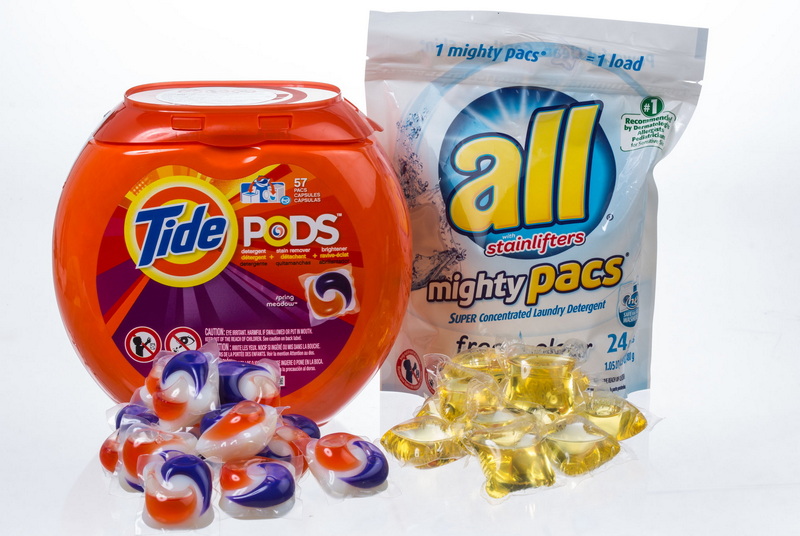Dongguan UFine Daily Chemical Co.,Ltd.
- All
- Product Name
- Product Keyword
- Product Model
- Product Summary
- Product Description
- Multi Field Search
Views: 222 Author: Tomorrow Publish Time: 11-25-2025 Origin: Site











Content Menu
● What Happens Immediately After Eating a Tide Pod?
● Effects on the Mouth, Throat, and Esophagus
● Respiratory Complications and Aspiration Risks
● Long-Term Effects of Tide Pod Ingestion
● Medical Treatment and Emergency Response
● Preventing Tide Pod Ingestion
● Frequently Asked Questions (FAQ)
>> 1. What are the immediate symptoms after eating a Tide pod?
>> 2. Can eating a Tide pod cause long-term health problems?
>> 3. What should I do if someone swallows a Tide pod?
>> 4. Are there risks specific to children eating Tide pods?
>> 5. How have manufacturers tried to make Tide pods safer?
Laundry detergent pods like Tide pods have become a popular cleaning product because of their convenience and concentrated cleaning power. However, these small, colorful pods contain highly toxic and caustic chemicals not meant for human consumption. Accidental or intentional ingestion of Tide pods can lead to severe health consequences. This article delves into the effects, symptoms, risks, treatment, and prevention related to eating Tide laundry pods.

Upon biting into a Tide pod, the water-soluble pod coating rapidly dissolves, releasing a concentrated gel containing detergents, surfactants, and other harsh chemicals. The liquid's bitter taste activates a gag reflex, often causing immediate nausea and vomiting. The chemicals cause a burning sensation and irritation on contact with the mouth, lips, tongue, and throat mucous membranes. Swelling and redness develop quickly, often lasting for hours as the affected tissue mounts an inflammatory response.[11]
If swallowed, the detergent's harsh chemicals continue to cause chemical burns along the esophagus. This can result in intense pain, difficulty swallowing (dysphagia), and ulcers or erosions forming on the mucosal lining. The pod's sticky gel may adhere to the esophagus, compounding injury risk. In severe cases, perforation of the esophagus may occur, which is life-threatening and requires surgical intervention. Acid production in the stomach may increase, resulting in stomach irritation, gastritis, or ulcers. These internal injuries may cause persistent pain and complications that require long-term medical monitoring.[1][6][11]
Swallowing detergent pods poses a high risk of aspiration, where the liquid enters the lungs instead of the stomach. This triggers coughing, choking, and breathing difficulties. The surfactants and chemicals can inflame lung tissue, causing chemical pneumonitis, fluid buildup, and decreased oxygen exchange. Severe respiratory distress or failure can occur, often necessitating emergency airway management, oxygen therapy, or mechanical ventilation in a hospital setting. Even inhaled fumes can irritate and damage respiratory tract lining.[6][11]
Tide pods contain toxic substances including ethanol, hydrogen peroxide, and other volatile organic compounds. These can lead to systemic toxicity with symptoms like seizures, altered mental status, electrolyte imbalances, acute kidney injury, metabolic acidosis, and cardiovascular instability. Severe poisoning can depress the central nervous system, causing coma or death in extreme cases. The amount ingested and individual factors determine severity. Children and elderly people with diminished reserves are especially vulnerable.[12][1]
Long-term complications may arise from the initial chemical injuries caused by pod ingestion:
- Esophageal strictures (narrowing) leading to chronic swallowing difficulties.
- Persistent gastrointestinal inflammation or ulcers.
- Scarring in the respiratory tract, causing breathing problems.
- Swallowing dysfunction that might require surgical repair.
- Psychological effects from trauma and ongoing medical treatment.
Follow-up care focusing on swallowing function and respiratory health is often necessary for those who survive severe ingestion.[8][10][1]

Immediate emergency care is critical after Tide pod ingestion. Key points in treatment include:
- Avoid inducing vomiting, which may worsen damage.
- Support airway patency and breathing.
- Administer oxygen and intravenous fluids.
- Use medications to control pain, inflammation, and prevent infection.
- Perform endoscopy to assess injury extent.
- Hospitalize severe cases with respiratory distress or esophageal injury.
- Provide supportive care such as feeding tubes if swallowing is impaired.
- Monitor and treat systemic toxicity through specialized interventions.[7][13]
Manufacturers have tried to reduce ingestion risks by adding bittering agents to deter taste, improving child-resistant packaging, and placing warning labels on containers. However, accidental ingestion by children remains common, and some teenagers have ingested pods intentionally as part of social media challenges. Safe storage out of children's reach and public education on the dangers of pods are essential prevention measures. Awareness campaigns target caregivers and schools to emphasize the dangers of laundry pod ingestion.[9][14][11]
Eating a Tide laundry pod can cause serious, sometimes life-threatening injuries due to the intense caustic and toxic chemicals in the pods. Effects range from severe chemical burns of the mouth and esophagus to respiratory failure and systemic poisoning. Immediate medical attention is vital to manage acute symptoms and prevent long-term complications such as scarring and swallowing disorders. Prevention through education and safe storage is crucial to reducing accidental ingestions, especially in children.

Immediate symptoms include burning sensations in the mouth and throat, swelling, severe nausea, vomiting, coughing, and difficulty breathing due to chemical irritation.[2][11]
Yes, severe cases can result in esophageal narrowing, chronic swallowing issues, respiratory tract scarring, and may require surgery to repair damage.[10][1]
Do not induce vomiting. Seek emergency medical care immediately for specialized treatment, airway support, and injury evaluation.[13][2]
Children are especially at risk due to smaller airways and body size. They can experience more severe respiratory distress and systemic toxicity with even small amounts ingested.[2][7]
Manufacturers have added bitter taste deterrents, improved child-resistant packaging, and issued warning labels, but safe storage and supervision remain essential prevention strategies.[9][11]
[1](https://en.wikipedia.org/wiki/Consumption_of_Tide_Pods)
[2](https://www.poison.org/articles/laundry-detergent-pods-and-children)
[3](https://health.clevelandclinic.org/laundry-detergent-pod-challenge-risks-to-teens)
[4](https://abcnews.go.com/Health/internet-craze-tide-pod-challenge-dangerous-potentially-deadly/story?id=52379523)
[5](https://www.texaschildrens.org/content/wellness/dangers-consuming-laundry-detergent-pods)
[6](https://www.emra.org/emresident/article/laundry-pod-challenge)
[7](https://www.cdc.gov/mmwr/preview/mmwrhtml/mm6141a1.htm)
[8](https://pmc.ncbi.nlm.nih.gov/articles/PMC3860925/)
[9](https://www.cpsc.gov/content/cpsc-and-accc-warn-of-poison-dangers-with-liquid-laundry-packets)
[10](https://www.mountsinai.org/health-library/poison/detergent-poisoning)
[11](https://www.cosmopolitan.com/health-fitness/a15843023/tide-pod-effects/)
[12](https://www.pharmacytimes.com/view/what-pharmacists-should-know-about-the-tide-pod-challenge)
[13](https://canadiem.org/tide-pod-challenge-managing-caustic-laundry-pod-ingestion/)
[14](https://www.youtube.com/watch?v=0jbZP8TG-RA)